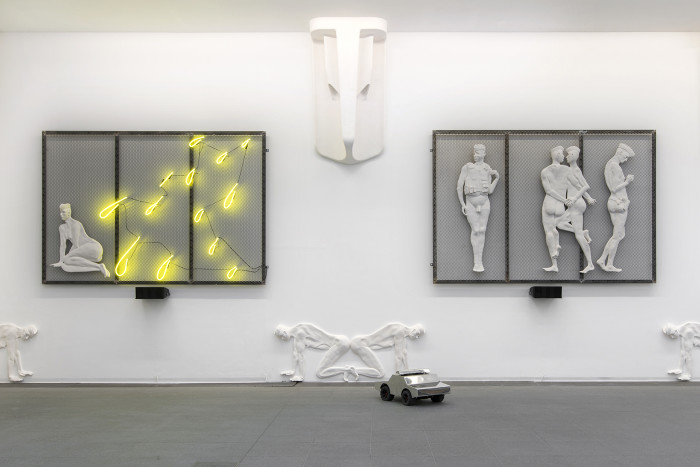Strategy of Non-Cooperation VI
Strategy of Non-Cooperation VI (2016) is a bas-relief featuring two mating dogs. In real-life dimensions, arranged at the bottom of a wall at their actual height, they interfere with the exhibition space with their trivial and undomesticated posture. Aline Bouvy plays with the symbolism of stray dogs, which could just as well be alley cats, pigeons, or rats, animals that "have become the thugs of the city if we refer to the vocabulary of the denomination of these species: pests, harmful and invasive", the artist emphasizes. It is through the prism of freedom which characterizes these stray dogs that the title of this series takes on its full meaning. In the street, the dogs do as they please and thus escape any relationship of domination intended by man.
Both in its subject matter and its crude sculptural treatment, the Strategy of Non-Cooperation VI borrows from the aesthetics of the grotesque, a literary concept inherited from the Middle Ages and studied in particular by the Russian author Mikhail Bakhtin. Based on the writings of François Rabelais, the author is interested in the temporary reversal of hierarchies and values that absurd and grotesque exaggeration allows for. Aline Bouvy integrates the dirty, the ugly, and rejection in her creative process.
Strategy of Non-Cooperation VI thus resonates with other works by Aline Bouvy in KANAL Foundation's collection that deal with beings pushed to the margins of society by norms of capitalist and patriarchal modernity, namely the queer community, women, or even weeds growing in vacant lots. This body of work evokes “cruising”, a practice of exploration and wandering characteristic of the queer community, which takes place in marginal public spaces. The fluidity of the genres also operates in the materiality of the work. The whole series of Strategy of Non-Cooperation is realized in jesmonite, a natural material similar to plaster.


